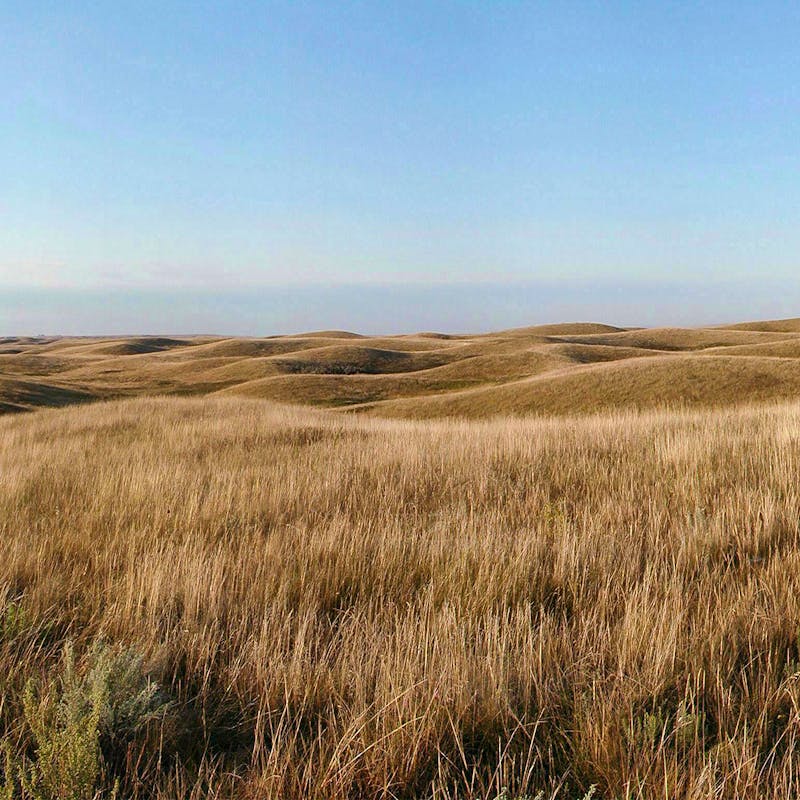Our national mammal, the American bison, is celebrated every first Saturday in November. This year, Americans have a lot to celebrate when it comes to the successful conservation efforts to bring back bison—often called buffalo by Tribal nations—to the Great Plains.
Today, more than 40,000 bison—managed as wildlife— roam the prairie grasslands in conservation herds on public lands as well as in cultural herds on Tribal lands. Many bison are also managed for agricultural production. Numerous Buffalo Nations are responsible for the return of the “Tatanka” buffalo in the wild herds. These animals are managed as free-ranging, many with the DNA of wild bison that historically once roamed the Great Plains.
The United States and sovereign Tribal nations have come a long way in bringing back bison that once numbered more than 30 million on the Great Plains. After their mass slaughter in the late 1800s, only about 1,000 animals survived in a small herd holed up in a remote area of Yellowstone National Park. But today several herds with over 1,000 animals live on large, managed landscapes. Yellowstone, Badlands, Theodore Roosevelt and Wind Cave national parks have herds where the public can view them in their natural habitat.
Some reserves also have plans to grow herds to 1,000 animals or more with the goal of diversifying genetics such as those found in Yellowstone and Badlands bison. This would prevent a genetic bottleneck that could be detrimental to the viability of the species. Places such as the American Prairie Reserve in central Montana and the Southern Plains Land Trust in Colorado have been instrumental in this effort. The reserve manages a herd of approximately 800 animals and swaps bison with tribes also working to diversify their herds. The land trust is home to the first wild herd in the southern plains of Colorado since bison historically roamed there. It began its herd with Yellowstone animals donated from bison managed by Colorado State University, with support from Defenders. The trust’s Heartland Reserve has almost 23,000 acres dedicated to bison, with plans to expand to more than 40,000 acres in coming years to grow the herd. Three calves were born this spring.
Buffalo Nations have also experienced growth in their cultural herds. Many tribes have signed the Buffalo Treaty, committing their nations to ecological and cultural bison restoration. At a treaty event in 2018 at Flathead Lake, Montana, Blood Tribe member Leroy Little Bear said, “Through the renewal and application of North American Indian paradigms, one discovers that sustainability, leaving the land as pristine as possible, and having humans fit themselves into the ecological balance are fundamental to the life-ways of Indian people. But the buffalo is a major player in this ecological scenario. The near extinction of the buffalo left a major gap. The treaty on buffalo restoration aims to begin to fill that gap and once again partner with the buffalo to bring about cultural and ecological balance.”
I was at that Buffalo Treaty where Little Bear said these words, and I was asked by him, on behalf of Defenders, to sign the treaty as a major Tribal partner. It was truly an honor.
The Fort Peck Assiniboine and Sioux tribes have nearly 700 animals (cultural and commercial herds) on a combined 24,000 acres. The Fort Belknap Aaniiih and Nakota tribes have 800 buffalo in herds with Yellowstone bison and animals in the Snake Butte herd on a combined 23,000 acres. Blackfeet Nation has 250 bison in a cultural herd managed on the reservation, with plans—the Iinnii Initiative—to soon allow the herd to migrate into Helena Lewis and Clark National Forest and beyond into Glacier National Park. The Rosebud Sioux Tribe just started a herd with 175 bison on 27,000 acres, thanks to support by the World Wildlife Fund. The Wind River Eastern Shoshone and Northern Apapahoe tribes, along with the National Wildlife Federation, also are working to grow their herd from 60 animals to upward of 1,000 and expand the buffalo habitat to more than 60,000 acres.
The InterTribal Buffalo Council, representing 78 Tribal nations, has made the growth of the herds on these lands possible, thanks to a partnership with the Fort Peck Indian Reservation in Montana. Today, entire families of bison are transferred from Fort Peck to tribes across the west, and as far as Alaska. Defenders recently joined as a partner, supporting the transportation of Yellowstone bison to tribes by signing a memorandum of understanding with the council.
Defenders is on the ground with Buffalo Nations helping tribes acquire land—often through grazing permits—that can be dedicated to bison habitat or funding projects such as bison fencing. We also advocate for state and federal legislation for Tribal buffalo programs, with much of our work over the last several decades leading to important relationships with Tribal leaders, and as they say, helping heal their nations. Americans can celebrate National Bison Day knowing that we have bison back on the Great Plains, wild herds roaming in our national parks, wildlife refuges and reserves, and among the Buffalo Nations.








